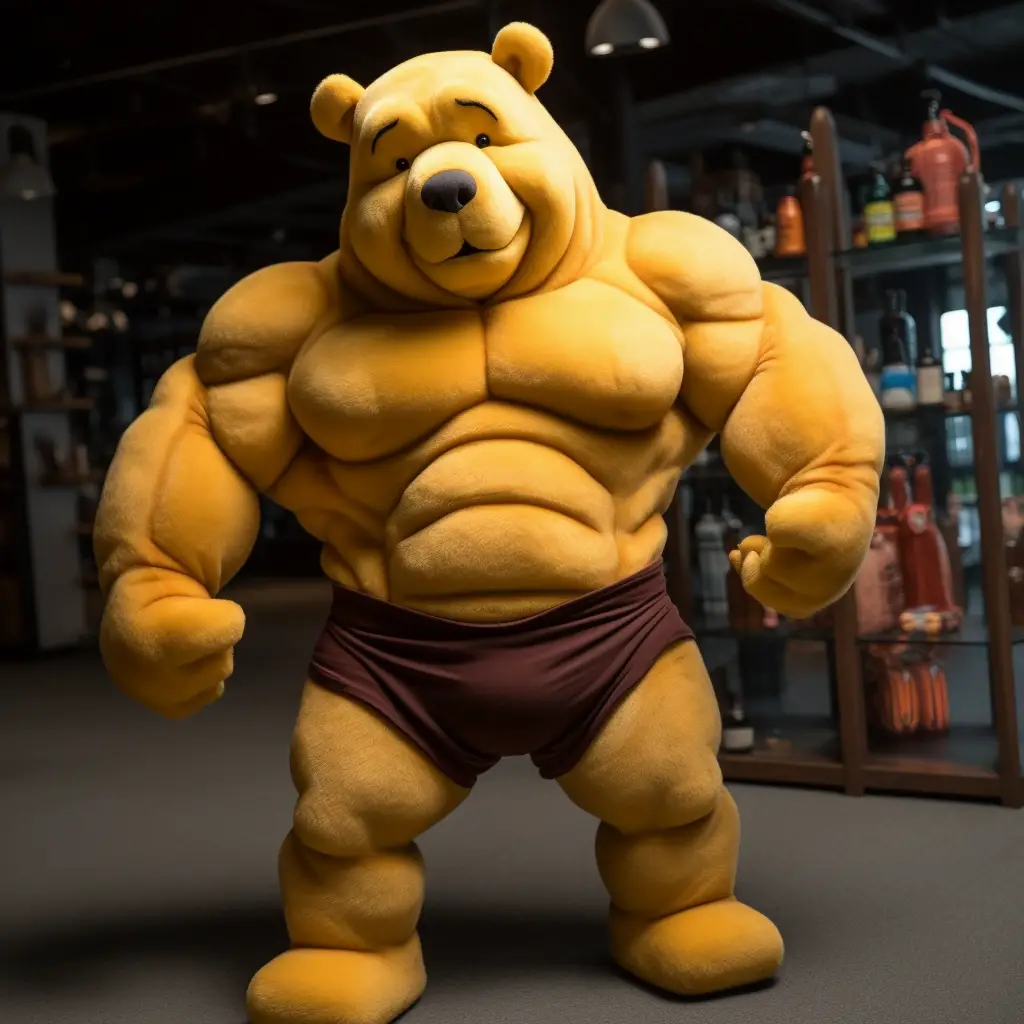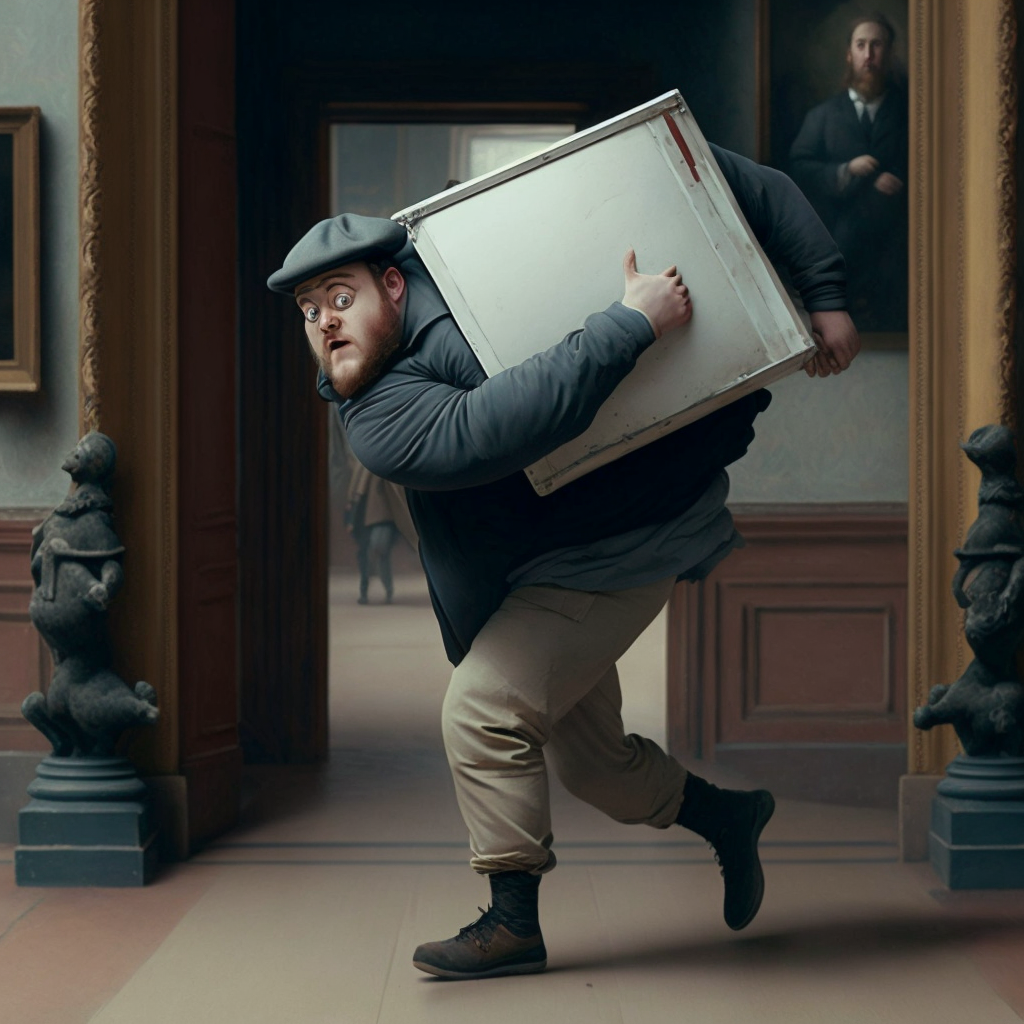
Have you ever found yourself humming along to the catchy tunes of Winnie the Pooh, or maybe reminiscing over a heartwarming story about a silly old bear’s adventures in the Hundred Acre Woods?
I certainly have, at least when I was a young lad.
Now, you might be wondering, “What does copyright have to do with a honey-loving bear?” Well, quite a lot, actually. You see, our beloved Winnie the Pooh has recently entered the public domain, meaning he is no longer under copyright protection.
This has significant implications, allowing anyone to use, adapt, or share Pooh’s stories without needing permission or paying royalties. So, how did this happen? Why is a character as popular and commercially successful as Winnie the Pooh out of copyright now?
The story is as fascinating as it is complex, and it all has to do with the intricacies of copyright law and, surprisingly, the late Sonny Bono. Let’s take a journey into the Hundred Acre Woods of copyright law to find out more.
Why is Winnie the Pooh in the Public Domain Now?
As the calendar turned to January 1, 2022, a significant event occurred in the world of intellectual property: creations first published in 1926 transitioned into the public domain. Among the numerous works impacted are notable pieces like Dorothy Parker’s Enough Rope, Ernest Hemingway’s The Sun Also Rises, Bambi, a Life in the Woods by Felix Salten, The Castle by Franz Kafka, and “The Land of Mist” by Arthur Conan Doyle.
Nevertheless, the focal point of much discussion has been A.A. Milne’s original Winnie-the-Pooh tale.
The reason is clear: Disney obtained the rights to the book and its characters in 1961, subsequently producing a continuous flow of movies, TV series, and merchandise featuring these beloved figures.
This propelled Winnie-the-Pooh to become one of the most easily identified animated characters globally. Disney’s creations continue to captivate both children and adults, and the character has even made headlines as a tool for poking fun at Chinese President Xi Jinping.
Sonny Bono Copyright Term Extension Act
In 1998, the United States Congress passed a law called the Sonny Bono Copyright Term Extension Act (named after the late congressman and singer-songwriter, Sonny Bono). This law is sometimes also referred to as the “Mickey Mouse Protection Act” because it notably benefited Walt Disney’s copyrights, including the very famous Mickey Mouse.
Before this law, copyrights for works of authorship (like books, movies, music, etc.) generally lasted for the author’s lifetime plus 50 years. But the new law extended the copyright duration to the author’s lifetime plus 70 years. For works created by corporations (like our friend Mickey Mouse), the copyright term was extended from 75 years to 95 years.
So why did they do this?
The main reason given was to align U.S. copyright law more closely with European law, which already had a life-plus-70-years term. Supporters of the law also argued that it would help protect and incentivize creativity by allowing creators (or their heirs or companies) to profit from their works for a longer period of time.
But not everyone was happy about this. Critics of the law argue that it goes against the original purpose of copyright, which is to promote the creation of new works by giving authors a temporary monopoly on their creations before those works enter the public domain and can be freely used by everyone. They believe that such long copyright terms mainly benefit corporations and the heirs of successful authors, rather than promoting new creativity.
The law was challenged in a Supreme Court case called Eldred v. Ashcroft, but the court ultimately upheld the extension.
In a nutshell, the Sonny Bono Act extended the length of time that creative works are protected by copyright, which means those works can’t be freely used or adapted by others for a longer period of time.
So, the original work, Winnie-The-Pooh written by A.A. Milne, officially entered the public domain on January 1, 2022. That’s because for most works created before 1978, the copyright lasts for either 95 years from publication or 120 years from when it was created.
In this case, it was 95 years.
Can You Use Winnie the Pooh to Make New Artwork?
Yes and no.
Imagine a company, not Disney, decides to produce its own animated rendition of the story. Or some creative soul decides to publish their version of the book with brand new art. Sounds fun, doesn’t it? But there’s a catch. This newfound freedom is restricted to this specific book and its content.
Remember, Milne penned four books starring our honey-loving bear.
Only the first one has stepped into the public domain. So, characters from the later books, like Tigger for instance, are still under copyright protection. Here’s an interesting tidbit: the image of Pooh in his iconic red shirt didn’t appear until 1932. So, anyone looking to make use of this now-public domain work should think twice about how they depict him, at least for a few more years (or more government law meddling by big corporations).
And let’s not forget about Disney.
Their creative endeavors aren’t affected by this change. Their first animated spin on the character didn’t grace the screens until 1966, meaning they’ve still got a good four decades of copyright protection left. Disney’s interpretations of the characters are still under lock and key. Anyone eager to make use of Winnie-the-Pooh should tread carefully around these copyrighted versions.
The safest bet? Stick to the original book.
But here’s the rub. The original work doesn’t hold the same allure for most people. The characters, especially the line art drawings, are pretty different from what we’re familiar with today. Even though the book retains a certain charm, it doesn’t hold a candle to the recognizability of Disney’s interpretations.
So, for Disney, not much really changes, except for the possibility of a few new adaptations of the original work cropping up. But honestly? I don’t think they’re losing sleep over it.
Which Characters From Winnie the Pooh are in the Public Domain Now?
Since only the first book about the honey-loving bear is out of copyright for now, later creations and modifications by Disney aren’t yet allowed to be used (no red shirt, no Tigger, for example). But that does leave artists with the characters Christopher Robin, Pooh, Piglet, Eeyore, Rabbit, Kanga, Roo, and Owl all free to be remade into new works of awesomeness! Remember though, it’s only as they were originally depicted in the first book.
What Other Famous Media is Copyright Free Now?
Of course, it’s not all about honey and bears, there are many other wonderful works of art, writing, movies, and songs that are coming out of copyright in recent years. Here’s some of the more notable ones.
Literary works entering public domain:
- “The Tower Treasure” (Hardy Boys series) by Franklin W. Dixon (2023)
- “Le Temps retrouvé” (In Search of Lost Time series) by Marcel Proust (2023)
- “Amerika” by Franz Kafka (2023)
- “Men Without Women” by Ernest Hemingway (2023)
- “Mosquitoes” by William Faulkner (2023)
- “Now We Are Six” by A.A. Milne (2023)
- “The Big Four” by Agatha Christie (2023)
- “The Case-Book of Sherlock Holmes” by Arthur Conan Doyle (2023)
- “The Gangs of New York” by Herbert Asbury (2023)
Films entering public domain:
- “Wings” (first Oscar-winning Best Picture) (2023)
- “The Jazz Singer” (first synchronized dialogue film) (2023)
- “Sunrise” (2023)
- “Metropolis” (2023)
- “The Lodger: A Story of the London Fog” (Alfred Hitchcock’s thriller) (2023)
- “7th Heaven” (2023)
Music entering public domain:
- “Ice Cream (I Scream, You Scream, We All Scream for Ice Cream)” by Howard Johnson, Billy Moll and Robert King (2023)
- “Puttin’ on the Ritz” by Irving Berlin (2023)
- “East St. Louis Toodle-O” by Bub Miley and Duke Ellington (2023)
- “Funny Face” by Ira and George Gershwin (2023)
- “Gully Low Blues” and “Potato Head Blues” by Louis Armstrong (2023)
- “Ol’ Man River” by Oscar Hammerstein II and Jerome Kern (2023)
- “The Best Things in Life Are Free” by George Gard De Sylva, Lew Brown and Ray Henderson (2023)
Characters entering public domain:
- Mickey Mouse (2024)
- Pluto (2025)
- Donald Duck (2029)
- Superman (2033)
- The characters from J.R.R. Tolkien’s The Hobbit (2033)
- James Bond (2034)
- Batman (2034)
- Captain Marvel (DC’s Shazam) (2034)
- The Flash (Jay Garrick version) (2035)
- Captain America (2036)
- Aquaman (2036)
- Wonder Woman (2036)
Want me to add any to the list? Give a shout in the comments!
Perhaps you’re also interested in finding out more awesome children’s books and authors to read about.


